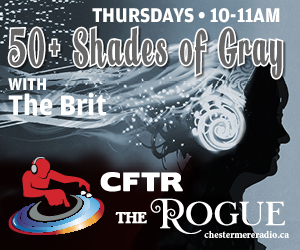Your humble narrator was visiting a new sushi restaurant last week, along with my usual group of ne’er-do-well drinking companions, when our server suggested a new libation called Shōchū.
And when I say new, I mean new to your intrepid liquor reporter, whose admittedly limited knowledge of Japanese booze ranges from Sake rice wine to those giant cans of Sapporo beer.
Yes, gentle reader, my curiosity had been piqued, and not even Godzilla himself could have prevented me from sampling this fabulous Japanese hooch.
Our story begins more than 500 years ago, on the Japanese island of Kyūshū, where the spirit had been introduced by Persian traders. For the first few centuries, Shōchū was prepared by distilling a Sake rice wine, making it a distant relative of French Brandy or Scotch Whisky.
Shōchū is a distilled spirit, similar to vodka, although usually in the 25-35% ABV range. The primary starch used is rice, especially in regions of Japan known for their Sake rice wine. Barley, buckwheat, and sweet potatoes are frequently used as well, each fermenting the base ingredients into a weak brew, and then distilling to reach higher alcohol concentrations.
While Shōchū was originally a drink consumed primarily by distinguished gentlemen of a certain age, it became trendy with young ladies in the early 2000s, followed quickly by the coveted young male demographic.
Today, the distillation of Shōchū has become industrialized, with massive column stills cranking out thousands of liters per hour. This high-volume production of Shōchū keeps the price low, and the slightly harsh taste often disguised by using it as a mixer in cocktails.
Higher-end brands of Shōchū will use pot stills instead of column stills, in a manner similar to fine single malt whisky. The pot stills retain more of the flavourful congeners from the base grain, making for a more complex spirit.
After distillation, the Shōchū will be aged anywhere from one month up to three years, depending on the goals of the distiller. Cheaper spirits are matured in stainless steel vats, while the pricier spirits are aged in wooden barrels or clay amphorae, which mellows out the spirit prior to bottling.
Today, Shōchū is the most popular spirit in Japan, and is so ubiquitous that it can be found in vending machines on the street, or in tetrapak boxes in supermarkets, and even available in paper cups from street vendors.
In a country where Sake reigned supreme for so long, it is impressive for Shōchū to have tripled in popularity since the 1980s, now controlling two-thirds of the spirits market in Japan.
Many fancy cocktail bars in Japan have swapped out Vodka for Shōchū in their signature drink recipes, despite Shōchū normally only being about half the strength of Vodka. Lower taxes on Shōchū have certainly helped make it the spirit of choice in Japan, and we are now seeing expansion into the European and North American markets.
Because Shōchū can have so many different base ingredients, there are various ways to consume it. The pricier Shōchū that has been aged in wooden barrels is generally best consumed straight, perhaps chased with a bit of water. Your humble narrator sipped this type of Shōchū at room temperature while nibbling on sushi and sashimi, and was suitably impressed.
Shōchū made from barley usually has a nutty taste, and usually tastes best chilled, poured over ice into a rocks glass.
Shōchū made from sweet potatoes has a strong umami flavour, and is best enjoyed when mixed half-and-half with hot water.
Those readers familiar with Japanese cuisine may recognize the koji fungus, which is used in the preparation of miso soup, soy sauce, and a variety of other traditional Japanese dishes. Unsurprisingly, koji mold spores are also used to create Sake rice wine, as well as a particular style of Shōchū, similar to the way that the vineyards of Bordeaux use botrytis spores to create wines with the so-called Noble Rot.
Shōchū can easily be found if you are in a sushi restaurant, but it is still a little challenging to find a bottle at your friendly neighbourhood booze merchant. Your humble narrator had to check www.liquorconnect.com to find the closest retailer, and needed to travel into NE Calgary to find a bottle shop that stocked Shōchū.
Step out of your normal comfort zone and try some Shōchū today!








